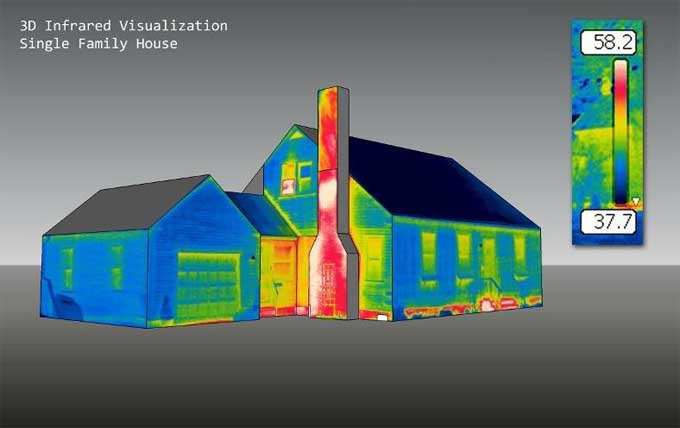SketchUp for Scientific Visualization: Bridging the Gap between Complexity and Comprehension

In the realm of scientific research and education, the ability to communicate complex concepts is paramount. Visualization serves as a powerful tool to bridge the gap between intricate scientific data and public understanding. SketchUp, a 3D modelling software renowned for its ease of use, has found a unique application in scientific visualization.
The Power of Visualization in Science
Overcoming Complexity
Scientific concepts, whether in the realms of chemistry, biology, or geology, often involve structures and processes that are inherently complex. Visualization provides a means to simplify and convey these intricacies in a form that is accessible to a broader audience. By leveraging the visual sense, scientists can convey information more effectively, aiding both experts and non-experts in understanding complex phenomena.
Enhancing Communication
Effective communication is at the heart of scientific progress. Visualization not only aids in understanding but also facilitates communication among scientists and between researchers and the public. Clear and engaging visual representations foster a shared understanding of scientific principles, sparking curiosity and interest in the broader community.
SketchUp's Role in Scientific Visualization
Intuitive 3D Modeling
SketchUp's intuitive interface makes it an ideal choice for scientists and researchers seeking to create 3D models of complex structures. Unlike more specialized software that may have a steeper learning curve, SketchUp allows users to quickly translate their scientific knowledge into visual representations. This accessibility is key, enabling scientists to become visual communicators without extensive training in graphic design or 3D modelling.
Molecular Structures: Bringing Chemistry to Life
In the realm of chemistry, understanding molecular structures is fundamental. SketchUp excels in creating 3D models of molecules, allowing researchers to visualize the spatial arrangement of atoms and bonds. This capability is invaluable in fields such as drug discovery and materials science, where the interaction of molecules plays a crucial role.
Case Study: Drug Design
Researchers studying drug interactions use SketchUp to model the three-dimensional structure of molecules. By visualizing how a potential drug molecule fits into the active site of a target protein, scientists can better understand and predict the drug's efficacy. This visual approach streamlines the drug design process and facilitates collaboration among multidisciplinary teams.
Biological Processes: Unraveling Life's Complexity
In the realm of biology, SketchUp aids in visualizing intricate biological processes. From cellular interactions to the unfolding of DNA, the software allows scientists to create dynamic 3D models that capture the essence of life's complexity.
Case Study: Cell Signaling Pathways
Cell signalling pathways, which regulate various cellular functions, are notoriously complex. SketchUp's ability to create interactive and layered 3D models enables scientists to illustrate the intricate cascade of molecular events in these pathways. By animating the process, researchers can communicate how signals are transmitted within cells, providing a clearer understanding of cellular behaviour.
Geological Formations: Unveiling Earth's History
In geology, the ability to visualize geological formations is essential for understanding Earth's history and processes. SketchUp's capacity to model landscapes and rock formations allows geologists to create accurate and engaging representations of the Earth's surface.
Case Study: Plate Tectonics
The movement of tectonic plates is a fundamental concept in geology. SketchUp enables geologists to model plate boundaries, illustrating how continents drift over time. This visual representation aids in conveying the dynamic nature of Earth's crust and helps students and researchers alike grasp the intricacies of plate tectonics.
Best Practices in Scientific Visualization with SketchUp
Integration of Data
Scientific visualization often involves incorporating data from various sources. SketchUp's flexibility allows for the integration of data into 3D models, enhancing the accuracy and relevance of visual representations. Whether it's overlaying geological survey data onto a landscape model or incorporating molecular data into a protein structure model, SketchUp provides a platform for a comprehensive visualization experience.
Interactivity for Engagement
Adding interactive elements to scientific visualizations enhances engagement and understanding. SketchUp allows for the creation of dynamic models where users can interact with different components, revealing additional information or triggering animations. This interactivity transforms static visualizations into dynamic educational tools.
Collaboration in Research
Scientific research is a collaborative endeavour, and SketchUp's cloud-based platform facilitates teamwork among researchers. Multiple team members can collaborate on a single model, making it easier to combine expertise from different disciplines. This collaborative approach fosters innovation and accelerates the pace of scientific discovery.
Challenges and Future Directions
While SketchUp excels in scientific visualization, challenges persist. One notable limitation is the software's precision compared to specialized scientific visualization tools. In fields where exact measurements are critical, researchers may need to combine SketchUp with other software or use plugins to enhance precision.
Looking ahead, the integration of SketchUp with emerging technologies such as virtual reality (VR) and augmented reality (AR) holds exciting potential. These technologies could elevate scientific visualization to new heights, allowing users to immerse themselves in 3D models and explore complex concepts in a more immersive and interactive manner.
To learn more, watch the following video tutorial.
Video Source: Google for Developers
Conclusion
SketchUp's application in scientific visualization marks a paradigm shift in how researchers communicate complex concepts. By providing a user-friendly platform for creating 3D models, SketchUp empowers scientists to become visual storytellers. From molecular structures to biological processes and geological formations, the software serves as a bridge between the complexity of scientific data and the comprehension of a diverse audience.
As the fields of science and technology continue to advance, the role of visualization in research and education will become increasingly pivotal. SketchUp's accessibility and versatility position it as a valuable tool for scientists, educators, and communicators seeking to unravel the mysteries of the natural world and convey the beauty and complexity of science to the broader community. Through the lens of SketchUp, science becomes not just a body of knowledge but a visual narrative that captivates, educates, and inspires.



